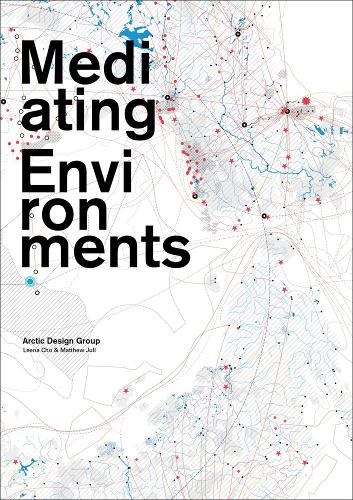
Mediating Environments
(Paperback)
Publishing Details
Mediating Environments
By (Author) Leena Cho
By (author) Matthew Jull
Oro Editions
Oro Editions
28th January 2020
United States
Classifications
General
Non Fiction
711.42
Physical Properties
Paperback
240
Width 165mm, Height 241mm
Description
Mediating Environments examines fundamental and radical environmental conditions in the Arctic and provides a spectrum of innovative design approaches and spatial outcomes. Climate organizes and sustains a broad range of activities in the Arctic, and it will dictate the future transformations in northern urban landscapes and their metabolic operations. As such, arctic urbanism must take into account the varied nuances of weather phenomena that are deeply engrained in everyday living practices and biophysical fabrics. By revisiting and reconfiguring the intersections between environmental and design systems, this publication aims to expand conceptual strategies in the arctic beyond the modes of insulation, stabilization, and optimization while repositioning the region as a central figure within the global network of exchanges. How can the arctic wall as a defining feature of northern architecture be renegotiated Can design, whether it is pavement assemblies or building foundations built on permafrost, escape the confines of technical precedence aimed to resist instability, and instead work with take advantage of dynamic environmental mechanisms, such as thermal cycles of ground, pronounced in the region This study is not an argument against engineering but for greater synergies between engineering and design as well as between science and design, and for developing climatically responsive and arctic-specific paradigms for the construction and maintenance of arctic cities. The future of sustainable arctic development requires resiliency in urban form and programming that is adaptive to the current and future flux inherent in the region, as well as a repositioning of the arctic environment as a productive, robust, and dynamic foreground through which design and urbanism occur and are contextualized.
Mediating Environments is the first in the Next Cities publication series by UVA School of Architecture and its Next Cities Institute. The Next Cities series disseminates design research by faculty and students at UVA focused on the rapidly changing dynamics of global urban futures. The series expands on how designin its theory and physical instantiation in the worldprobes the questions and controversies of the day, continually writing new expressions of the city.
Reviews
"All capitalist eyes are on the opening of the Arctic, as global heating unlocks its forbidden seats and lays bare the region's raw wealth. Almost no design thinking goes on there, though, which is why Leena Cho and Matthew Jull, landscape architecture faculty members at the University of Virginia, have focused the work of their office, Arctic Design Group, and academic studios on considering alternative prospects for Arctic communities and lands beyond smash-and-grab resource extraction. In this book, a roster of designers and researchers builds intricate, compelling design proposals atop deep inventories of current Arctic conditions, plotting sustainable ways ahead for places roiled by radical change." --Landscape Architecture Magazine
Author Bio
Leena Cho is an assistant professor of Landscape Architecture at the University of Virginia, whose research investigates conception, representation, and design instrumentation of weather phenomena and climates in built environments. She received her MLA from the Harvard Graduate School of Design. Matthew Jull, Ph.D is an assistant professor of Architecture at University of Virginia. His research focuses on systems and processes of architecture and urbanisation in extreme environments, specifically in arctic Russia and North America. Jull received his MArch from the Harvard Graduate School of Design and his PhD in theoretical geophysics from Cambridge University.
